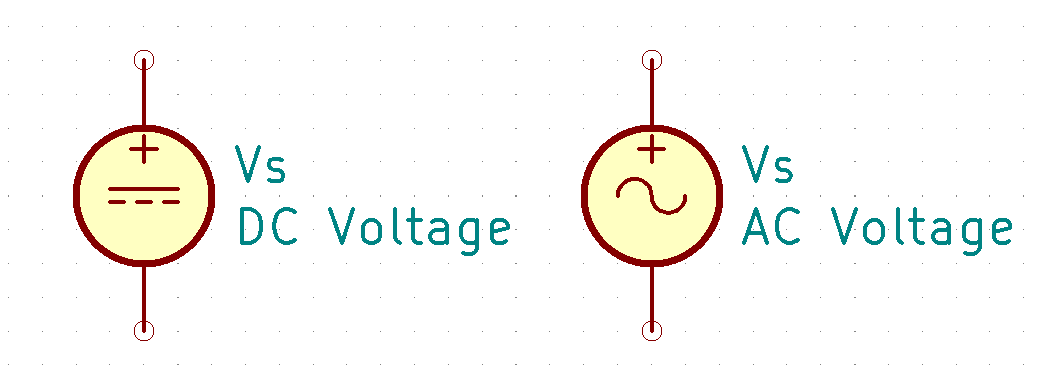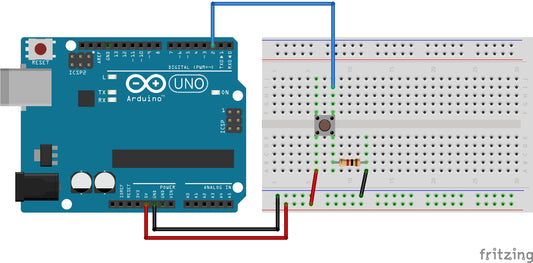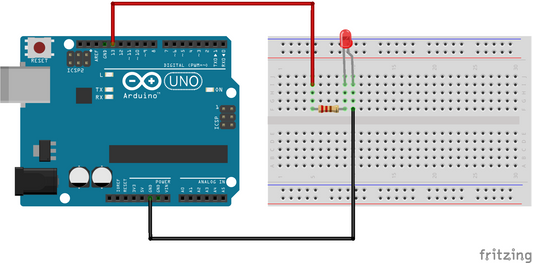Introduction
Welcome to All About Electrical and Electronics, where we dive into the captivating realm of STEM and DIY projects! In this article, we embark on a journey to unravel the mysteries of electrical voltage. Voltage is a fundamental concept in the world of electricity and electronics, a force that drives the flow of electric charges and powers our technological marvels. Whether you're an aspiring scientist, a curious hobbyist, or an eager learner, understanding voltage is the key to unlocking the potential of circuits, devices, and energy generation.
In this exploration, we'll not only define voltage and its units but also venture deeper into the mechanisms that generate it. We'll discover the diverse types of voltage sources that fuel our modern lives, from batteries and solar cells to thermocouples and piezoelectric sensors. Along the way, we'll delve into potential difference, which serves as the driving force behind electric currents. Moreover, we'll unveil the tools and techniques used to measure voltage accurately, aiding in the diagnosis of circuits and the optimization of electronic systems.
As we journey through these sections, we'll also shed light on the essential relationship between voltage, work, and charge. This formula unveils the energy required to move charge and the role it plays in creating potential difference.
Join us as we demystify voltage and empower you to venture into the world of circuits, electronics, and innovation with newfound understanding and confidence.
Understanding the Concept of Voltage
The Definition of Voltage and Its Units
Voltage, also known as electric potential difference or electric tension, is the measure of electric potential energy per unit charge present in a circuit. It represents the "push" that drives electric charges to flow from one point to another, creating an electric current. This potential difference is crucial for the movement of electrons and for the functioning of various electrical components and systems.
The Relationship Between Voltage, Work, and Charge
The relationship between voltage, work, and charge is encapsulated in the formula:
where V represents voltage, W denotes work done, and Q stands for electric charge. This formula reveals that voltage is essentially the energy required to move a unit of electric charge between two points. When work is done to move electric charge against an electric field, a potential difference is created, resulting in a voltage between those points.
To simplify this concept, imagine electric charge as a "cargo" that needs to be moved from one place to another. The amount of work required to move this charge (cargo) against an electric field determines the voltage. The formula quantifies this relationship, highlighting the integral connection between energy, charge, and potential difference.
History Note
Alessandro Volta, Italian (Como, Paria) (1745 -- 1827) Physicist, Professor of Physics, Paris, Italy Began electrical experiments at the age of 18 working with other European investigators. Major contribution was the development of an electrical energy source from chemical action in 1800. For the first time, electrical energy was available on a continuous basis and could be used for practical purposes. Developed the first condenser, known as capacitor. Was invited to Paris to demonstrate the voltaic cell to Napoleon. The International Electrical Congress meeting in Paris in 1881 honoured his efforts by choosing the volt as the unit of measurement for electromotive force.
Understanding AC and DC Voltage
Voltage can be categorized into two main types: Alternating Current (AC) voltage and Direct Current (DC) voltage. These two types of voltage have distinct characteristics and applications, shaping the way we use electricity.
Direct Current (DC) Voltage
Direct Current, or DC, is a type of voltage where the electric current flows in one direction. In a DC circuit, the potential difference between two points remains constant over time. Batteries, fuel cells, and solar cells are common sources of DC voltage. DC voltage is used in various applications, including electronics, battery-powered devices, and electric vehicles.
Alternating Current (AC) Voltage
Alternating Current, or AC, is a type of voltage where the direction of electric current periodically reverses. The voltage oscillates in a sinusoidal waveform, changing its polarity over time. AC voltage is commonly used in power distribution systems and household electricity. It's generated by power plants and transmitted through the grid to homes and businesses. AC voltage is preferred for long-distance transmission due to its ability to be easily transformed to different voltages.
AC vs. DC: Applications and Advantages
AC voltage is well-suited for long-distance transmission due to its ability to be easily transformed using transformers, while DC voltage is often used for applications requiring stable and continuous voltage, such as electronic devices. AC voltage also has the advantage of being able to change voltage levels efficiently, making it suitable for various voltage requirements.
Understanding the differences between AC and DC voltage is crucial for designing and working with electrical systems. The choice between AC and DC often depends on the specific application and the characteristics of the devices being used.
Generating Voltage
The ability to generate voltage is at the heart of our electrical world, enabling the creation of electric currents that power our devices and systems. This section will delve into the fundamental mechanisms that give rise to voltage and electric potential difference.
Electromagnetic Induction: Generating Voltage from Magnetic Fields
One of the key principles underlying voltage generation is electromagnetic induction. This phenomenon occurs when a change in magnetic field within a closed circuit induces a voltage. This concept is central to the operation of generators and transformers. Alternating current (AC) generators, for instance, use electromagnetic induction to convert mechanical energy into electrical energy by rotating a coil within a magnetic field.
Chemical Reactions: Unleashing Energy for Voltage
Chemical reactions are another potent way to generate voltage. Batteries and fuel cells exemplify this principle. In batteries, chemical reactions between different materials release stored energy in the form of electrons, creating a potential difference between the battery's terminals. Fuel cells, on the other hand, employ electrochemical reactions between fuel and oxidant to produce voltage and generate electricity.
Light to Electricity: The Photovoltaic Effect
Solar cells, also known as photovoltaic cells, harness the photovoltaic effect to directly convert sunlight into electricity. When photons from sunlight strike certain materials, they release electrons, creating an electric potential difference across the material. This phenomenon enables solar cells to generate voltage and provide a clean and sustainable energy source.
Mechanical Energy Conversion: From Motion to Voltage
Mechanical energy can be transformed into voltage through various mechanisms, including piezoelectricity. Certain materials exhibit piezoelectric properties, generating voltage when subjected to mechanical stress or pressure. This property has applications in sensors, energy harvesting from vibrations, and even in certain types of igniters.
Understanding these mechanisms is essential for grasping how voltage is generated and harnessed to power our technological advancements. As we explore the diverse voltage sources in the upcoming section, keep in mind the fundamental principles that underpin their operation.
Voltage Sources
Voltage sources are the engines that power our electrical devices and systems. In this section, we'll delve into different types of voltage sources, each with its own unique way of generating and providing electric potential difference.
How Do Voltage Sources Work?
Voltage sources are designed to maintain a consistent potential difference between two points, ensuring a continuous flow of electric current. These sources provide the essential "push" needed to overcome resistance and drive electrons through a circuit. Understanding how these sources operate is crucial for building reliable and efficient electrical systems.
The Ideal Voltage Source
In theory, an ideal voltage source would provide a constant voltage across its terminals, regardless of the current being drawn or external conditions. While not achievable in practice, this concept serves as a fundamental model for understanding voltage sources.
Types of DC voltage sources
Batteries: Portable Powerhouses
Batteries are among the most common and versatile DC voltage sources. They store chemical energy that can be converted into electrical energy on demand. From the small cells powering your remote control to the larger batteries propelling electric vehicles, batteries play a vital role in our daily lives.
Fuel cells: Efficient Energy Converters
Fuel cells are devices that generate voltage through electrochemical reactions between a fuel and an oxidant. Unlike batteries, which store energy, fuel cells can continuously produce electricity as long as the fuel and oxidant are supplied. They're used in applications ranging from backup power systems to clean transportation.
Solar cells: Harvesting Sunlight
Solar cells, also known as photovoltaic cells, convert sunlight directly into electricity through the photovoltaic effect. As photons from sunlight strike the solar cell's material, they release electrons and create an electric potential difference. Solar cells are an environmentally friendly way to generate electricity and have found widespread use in residential and commercial installations.
DC generators: Converting Mechanical Energy
DC generators, also known as dynamos, transform mechanical energy into electrical energy by rotating a coil within a magnetic field. This rotation induces a voltage, creating an electric potential difference. These generators have been historically significant and are still used in certain applications today.
The electronic power supply: Shaping Voltage for Devices
Electronic power supplies convert alternating current (AC) voltage from the grid into regulated direct current (DC) voltage suitable for various devices. They play a critical role in powering everything from electronics to telecommunications equipment.
Thermocouples: Temperature-Dependent Voltage
Thermocouples are voltage sources based on the See-beck effect, where a voltage is generated at the junction of two different metals when exposed to a temperature gradient. This phenomenon is harnessed for temperature measurements in a wide range of applications.
Piezoelectric sensors: Voltage from Mechanical Stress
Piezoelectric sensors generate voltage when subjected to mechanical stress or pressure. These sensors find use in detecting vibrations, measuring force, and even harvesting energy from ambient mechanical movements.
Understanding the diverse types of voltage sources allows us to tap into a wide array of technologies and applications, from basic circuits to advanced renewable energy systems.
Potential Difference: Unveiling the Driving Force
Potential difference, often referred to as voltage difference or voltage drop, is a critical concept that underpins the flow of electric current in circuits. It represents the difference in electric potential energy between two points and is the driving force behind the movement of electrons.
Potential difference is measured in volts (V), the same unit used to measure voltage. It quantifies the work done per unit charge in moving a charge between two points. When a potential difference exists across a component or a circuit, it causes electric charges to move, creating an electric current. Understanding potential difference is fundamental for designing circuits and optimizing the flow of electricity.
How to measure voltage
Measuring voltage accurately is essential for diagnosing circuit issues, assessing the performance of devices, and ensuring the safe operation of electrical systems. Various tools and techniques are employed for this purpose:
Multimeters: Versatile Voltage Measurement
Multimeters are versatile tools used for measuring various electrical parameters, including voltage. They can measure both direct current (DC) and alternating current (AC) voltages. Multimeters often come with different ranges to accommodate a wide spectrum of voltages, making them essential for both beginners and professionals.
Oscilloscopes: Capturing Voltage Waveforms
Oscilloscopes are sophisticated instruments that graphically represent voltage over time. They're invaluable for visualizing voltage waveforms, helping engineers and technicians analyse circuit behaviour and diagnose complex electrical issues.
Voltage Dividers: Scaling Voltage Measurements
Voltage dividers are passive circuits used to scale down high voltages to levels suitable for measurement. They consist of resistors connected in series or parallel, creating a known fraction of the input voltage that can be safely measured.
Hall Effect Sensors: Non-Contact Voltage Measurement
Hall effect sensors utilize the Hall effect to measure magnetic fields generated by currents. These sensors can indirectly measure voltage by detecting the magnetic field associated with a current-carrying conductor.
Non-Contact Voltage Testers: Safety and Convenience
Non-contact voltage testers allow users to detect the presence of voltage without making direct electrical contact. These testers are invaluable for quickly identifying live wires or circuits, enhancing safety during troubleshooting.
Conclusion
Voltage, the driving force behind electric current, is a foundational concept that shapes our modern world. From the principles of potential difference to the tools used to measure voltage accurately, this article has taken you on a journey through the essentials of electrical voltage. Armed with this knowledge, you're better equipped to explore the world of circuits, devices, and DIY projects with confidence.




